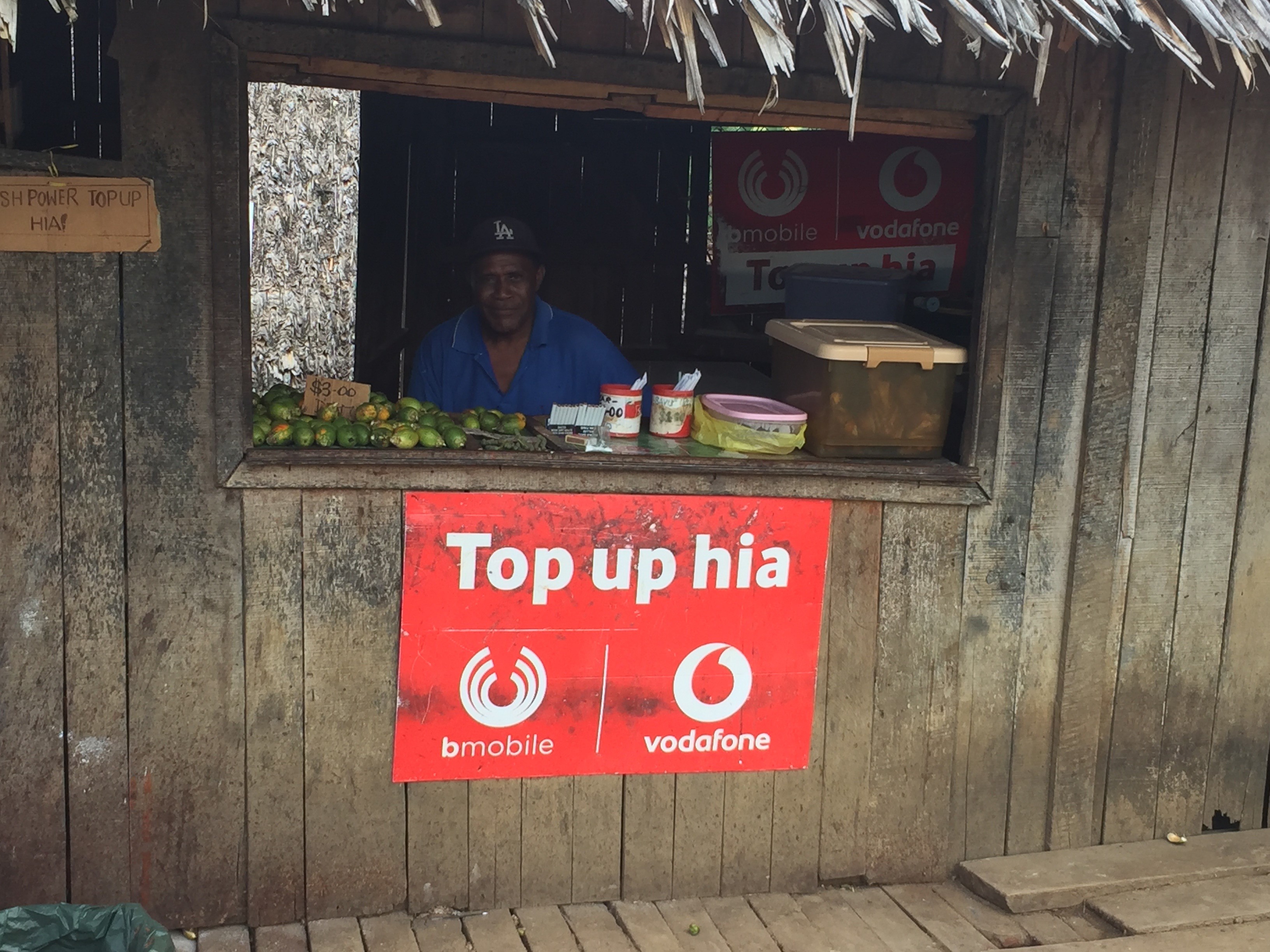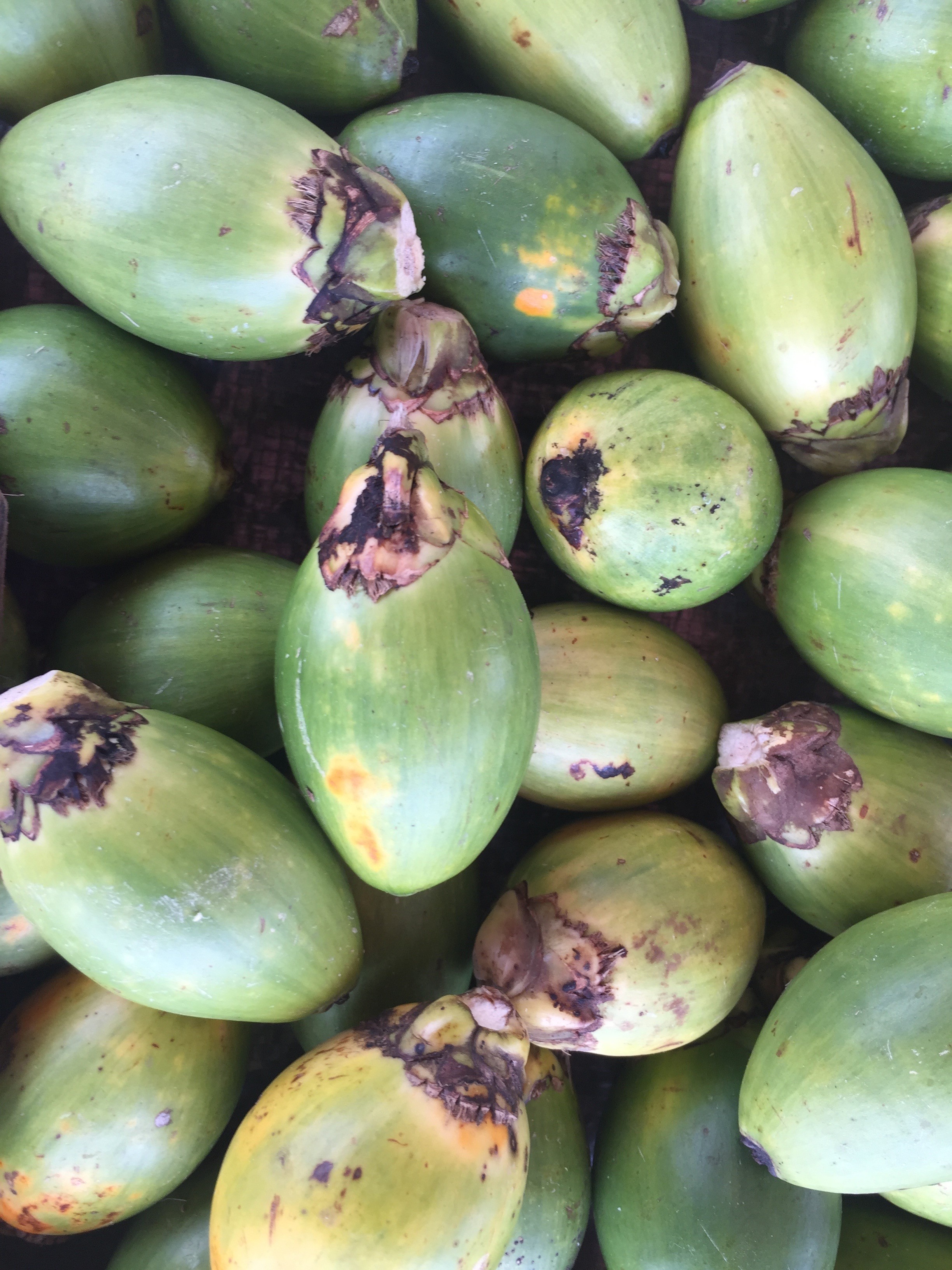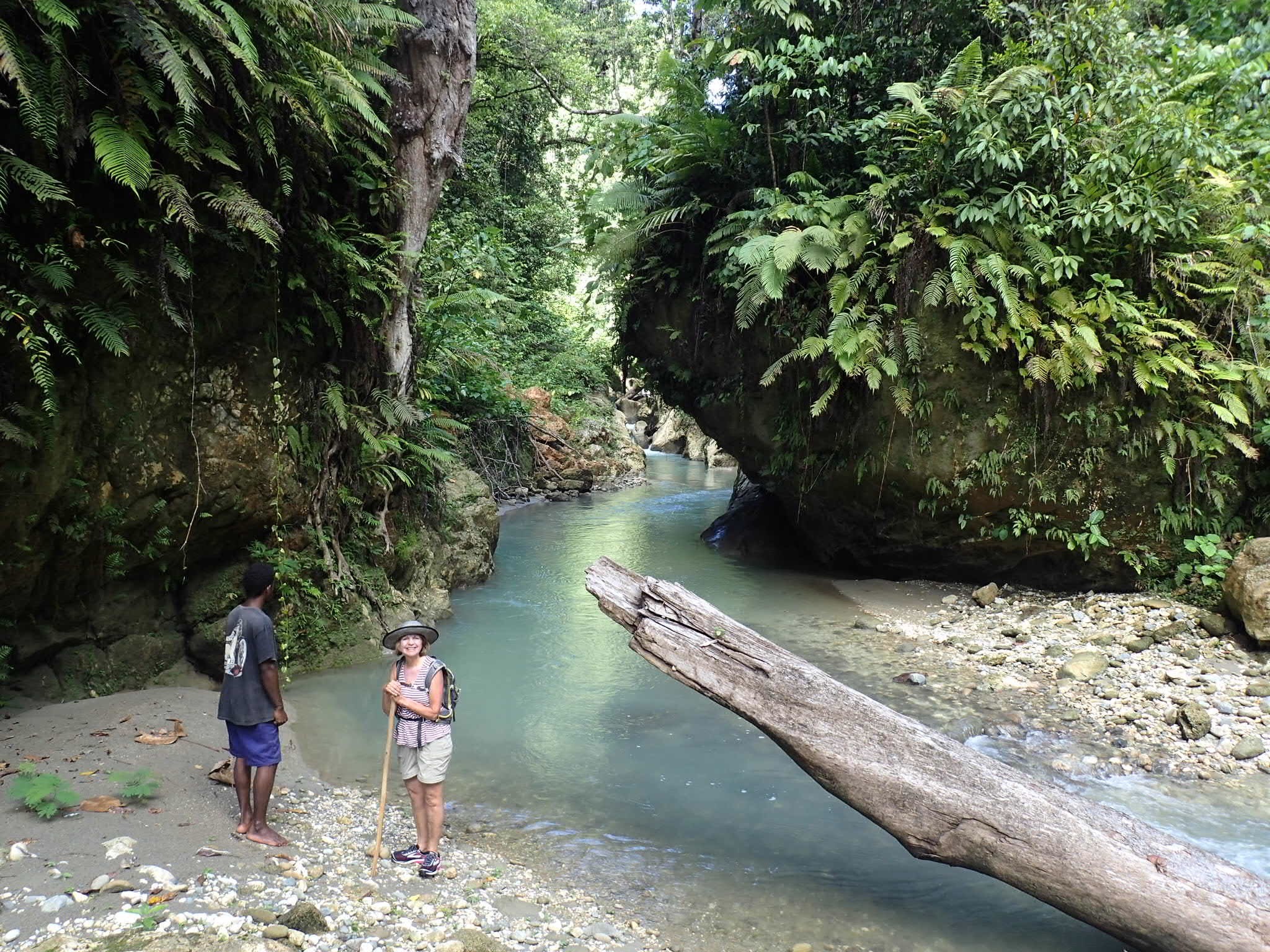Solomon Islands, Honiara
My view about Honiara (capital of Solomon Islands) declined after staying in this town for several days. The town is densely populated (over 70 000 people) and seems totally chaotic. No street names, no house numbers, no post delivery, streets with deep, rain filled holes, trash and abandoned, rusted cars beside the unpaved roads. People are selling betel nut in little huts, which they chew with lime that makes the saliva red. Red spit is on sidewalks and house walls, Men sit around in groups doing nothing. There is a darkness in this city. Maybe, it reflects the history of this town.
Close up of a betel nut booth with the possibility of charging up the cell phone written in Pidgin (hia = here)
Betel nut
The only underneath pass of Honiara with betel nut spit on the walls. Many people go barefoot.
The fierce battles of World War II have left their scars on the country. The recent civil War (mainly a conflict between Malaita and Honiara in 1990 ) was so gruesome and frightening, that the Australian government stepped in to make order. Every weapon was collected and destroyed. When walking through the city, it felt good to know that nobody had a weapon here, except machetes (which can be dangerous too in a conflict). Honiara is not a place to relax for Westerners.
In the Vilu War Museum outside of Honiara, I saw a few relics of crashed planes (Japanese and American). It reminded me of the madness of war. The rusted pieces rested in between beautiful blooming shrubs and trees with many colourful butterflies.
On the way to the Vilu war museum, I visited the Kinugawa-Maru-Bonegi Beach. Near the shore, a sunken World War II ship was still visible, with the rusted top reaching out of the water (about 50 sunken ships and planes from World War II are in the Ocean around Guadalcanal). Lorenz told me that several weeks ago friends of hime were snorkelling at this place when a salt water crocodile suddenly showed up. They escaped on to the platform of the ship and rescued. Every year people are attacked and some eaten by crocodiles.
Kinugawa Maru-Bonegi Beach with sunken war ship
On one day, the whole business district of Honiara had to be evacuated because they found an unexploded bomb, which had to be defused. On the same day, Ale and I took a wrong turn onto a road outside of Honiara, which was the entrance to the training center for defusing explosives.
On the description of how to get to the Paransiju Lodge, we were supposed to turn right after a bridge passed the airport. We turned right and found these signs. As there was no red flag, we drove on. Big mistake!!! We were chased by a military jeep and aggressively interrogated. Two days later, we passed the same site. The red flag was mounted and the barrier down. I would never go there again.
After that incident, we drove to the Paransiju Inland Mountain Lodge, a beautiful place in the middle of the jungle. Sewak, a 16 year old female guide, walked with me up a river to a gorgeous waterfall. I wanted to swim in the clear water and she said “now rain, worry about river, walk back!” She was right! Dark clouds were hovering in the west. Several weeks ago, a group of people drowned because of massive rain causing the swelling of the river. I followed her advice.
Two days later, I went to the same lodge and hiked up a different river to a cave housing thousands of bats. A river was flowing through the cave (a bat poop fell on my head when I was wading and swimming upstream in the dark). The water of another river came down as waterfall in front of the cave – it was a magical place.
Hiking up the river with our guide. He went barefoot. Sometimes, he had to pull me up a rock because it was too steep for me. A lot of time we had to wade and swim in the water. It was a difficult hike.












